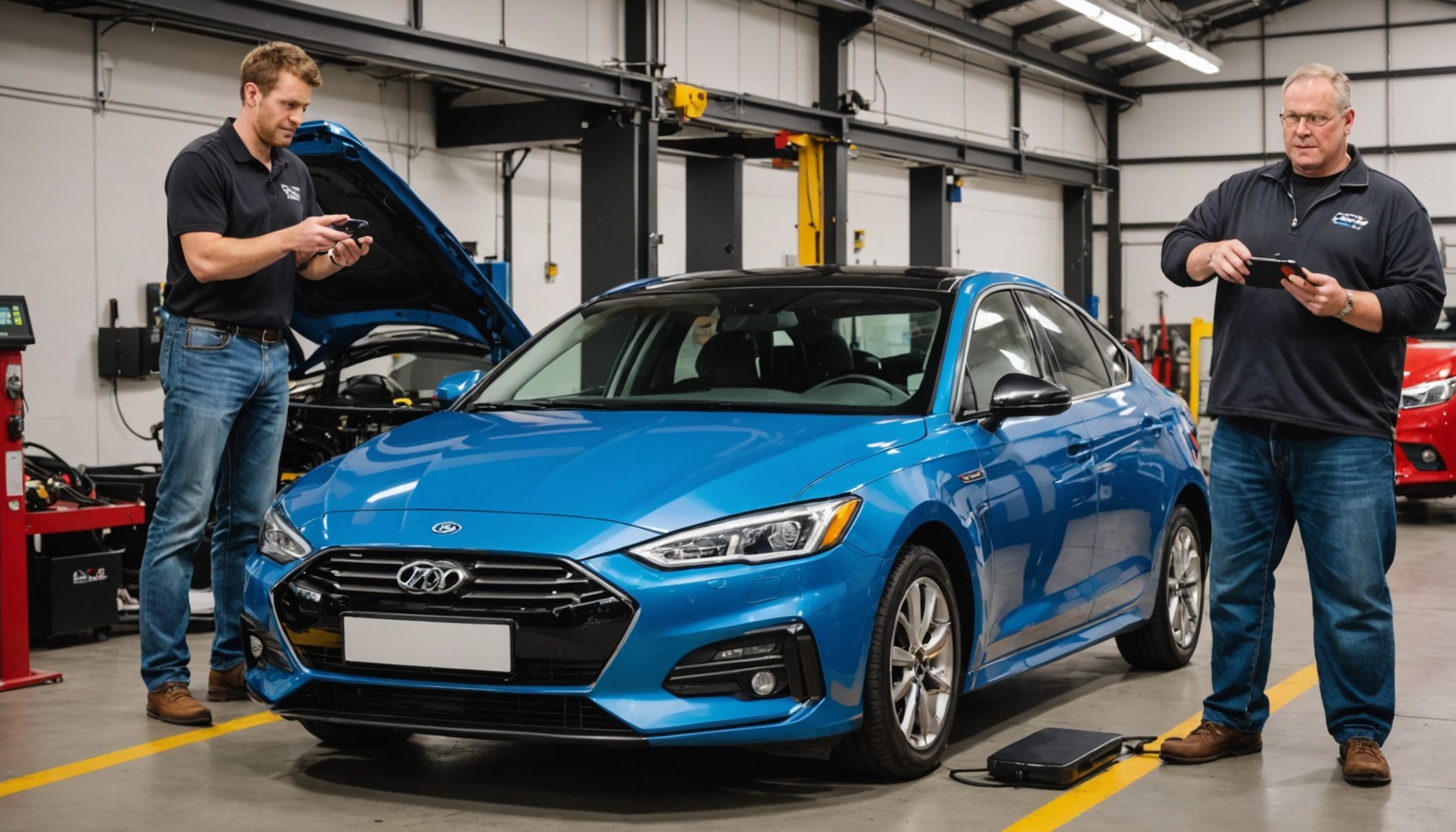Overview of Remote Start Systems
Remote start systems allow drivers to activate their vehicle’s engine from a distance, providing convenience and comfort. Such systems are particularly beneficial for hybrid vehicles as they enable pre-conditioning of the car’s climate, ensuring an ideal temperature before the driver enters. These systems work by employing advanced technology to communicate between a receiver installed in the vehicle and a remote or smartphone app used by the driver.
The core technology behind remote start systems includes a radio frequency receiver and a remote transmitter. In recent models, integration with smartphone apps has become common, allowing for even greater control over vehicle functions, such as activating the heating or air conditioning. This feature is especially valuable in hybrid vehicles, which may take longer to adjust to optimal temperatures due to their energy-efficient design.
Remote start systems are not only convenient but also enhance safety and efficiency. They allow hybrid vehicle owners to warm up their engines in a controlled manner, which can prolong the lifespan of the engine and reduce wear and tear. When considering a remote start system for a hybrid car, comprehensive knowledge of the product’s features is crucial for ensuring compatibility and maximising the benefits offered by this innovative technology.
Tools and Materials Needed for Installation
When installing a remote start system in your hybrid vehicle, having the appropriate installation tools is crucial for success. This ensures that the process is both efficient and safe. Essential tools typically include a screwdriver set, wire strippers, electrical tape, multimeter, and zip ties. These are fundamental in managing the intricate wiring and components involved in installation.
In parallel : Ultimate guide to installing a high-performance air filter in your british racing car: key steps for optimal performance!
For remote start materials, focus on compatibility with hybrid vehicles to ensure functionality. Recommended components often encompass a compatible remote start kit specifically designed for hybrid models. Investing in hybrid-specific items will prevent unnecessary complications during the installation process.
Hybrid vehicle tools might differ slightly due to the specialised nature of these cars. For instance, using a digital multimeter can be essential to precisely measure electrical outputs, ensuring safe integration with the car’s electrical system.
The importance of using the correct tools cannot be overstated as they prevent damage to both the remote start system and the vehicle. Improper tools can lead to safety risks, misaligned components, or even system failures. This not only safeguards the technician but also enhances the longevity and performance of both the remote start system and your hybrid vehicle.
Compatibility Checks for Hybrid Vehicles
Ensuring hybrid vehicle compatibility with remote start systems is crucial to avoid functional issues. Start by checking the manufacturer specifications and guidelines for your hybrid vehicle model. These resources can provide insights into whether your chosen remote start system will integrate seamlessly. Some systems might require specific firmware updates or have inherent limitations, so verifying compatibility is imperative.
Common compatibility issues include differences in wiring systems and power requirements unique to hybrid vehicles. These vehicles often have distinct electrical architectures compared to traditional cars. As such, a remote start system designed for generic models may not suit a hybrid without modifications.
Addressing these potential hurdles requires an understanding of the specific vehicle requirements. Hybrid models frequently necessitate additional interfaces or bypass modules to communicate with the remote start system effectively. It’s essential to invest in systems specifically designed for hybrid vehicles to prevent damage or malfunction.
By meticulously following the manufacturer’s guidelines and checking for compatible components, you can avoid the hassle of misalignment. Failing to ensure this compatibility might lead to operational failures, which not only impact convenience but also potentially harm the vehicle’s electrical system.
Step-by-Step Installation Instructions
Remote start systems can greatly enhance comfort and convenience for hybrid vehicles. These installation instructions guide you through the process, ensuring you can safely and efficiently integrate this technology.
Preparing for Installation
Before diving into the installation instructions, ensure you have all the necessary tools and materials. These include a screwdriver set, wire strippers, electrical tape, and a digital multimeter. It’s crucial to choose a remote start guide that matches your hybrid vehicle model for compatibility and ease of integration.
Wiring Connections
This is the most technical aspect — wiring connections must be handled with precision. Begin by locating your vehicle’s ignition wires. Use your digital multimeter to verify voltage levels. Connect the remote start system to the ignition, starter, and fuel pump wires, following your vehicle-specific wiring diagram closely. This is essential to avoid any errors that could lead to system malfunction.
Testing the System
Once your wiring is complete, it’s crucial to test the remote start system. Reconnect your vehicle’s battery and follow the activation instructions provided in the remote start guide. Check all functions, including starting the engine and controlling climate settings. Testing ensures everything is working correctly before regular use, highlighting any potential issues to address.
Safety Precautions During Installation
When installing remote start systems in hybrid vehicles, ensuring safety should be a top priority to prevent accidents or damage. Firstly, disconnecting the vehicle’s battery is crucial before starting any work. This precaution safeguards against electrical shocks and potential damage to the car’s system.
Installation safety also requires vigilance concerning the car’s electrical components. Hybrid vehicles are equipped with high-voltage systems, demanding extra caution. Wearing insulated gloves can provide an added layer of protection against electrical hazards. Moreover, carefully following the installation guide helps mitigate risks associated with improper connections or shorts.
It’s essential to be aware of common hazards unique to hybrid vehicles and remote start systems. These include the possibility of interfering with vehicle sensors and the risk of triggering airbag systems if wires are incorrectly tampered with. Adequate knowledge of the vehicle’s safety interface is thus indispensable.
Make sure the work environment is well-lit and free from distractions to maintain concentration. Employ organised tools and keep a fire extinguisher nearby as a precaution. Complying with these key safety measures ensures a smooth and secure installation process, protecting both the installer and the vehicle’s functionality.
Troubleshooting Common Issues
Installing remote start systems in hybrid vehicles can sometimes be challenging. Understanding the troubleshooting tips for resolving installation issues is key to ensuring a successful setup.
Remote start problems can range from non-responsive systems to incomplete engine startups. The most common issues arise from improper wiring connections or incompatible system components. To address these, refer back to your installation guide to verify each step was followed correctly. Carefully check each connection to ensure that they align with the system’s requirements.
If the remote start system fails to activate, inspect the vehicle’s battery and ensure it is fully charged. Low power can impede the functioning of electronic components. Additionally, double-check that all connections are securely fastened and sensor circuits are unobstructed.
In instances where the problem persists, consult your system’s customer support or active online forums for more nuanced solutions. These platforms often provide valuable insights from other users who have encountered similar installation issues.
Spending time on troubleshooting tips not only helps in diagnosing but also in understanding the intricacies of remote start systems, ensuring future installations are smoother. By systematically addressing these technical challenges, you can restore functionality and enjoy the many benefits of your remote start system.
Legal Considerations in the UK
Understanding the UK regulations concerning remote start systems is crucial, particularly for hybrid vehicle owners. According to current remote start legality frameworks, these systems must comply with specific vehicle codes. This includes ensuring the system does not interfere with essential car functions or safety features.
To adhere to UK regulations, it is essential to research whether specific mandates restrict the use of remote start systems under varying weather conditions or within different regions of the country. Generally, the systems must ensure the vehicle remains secure while the engine is running remotely, indicating the importance of auto-lock features.
Failure to comply with hybrid vehicle laws can lead to potential liabilities. This includes fines or penalties due to non-compliance with local regulations. Therefore, vehicle owners must thoroughly review product specifications and ensure any installed systems align with national laws.
For those considering installation, consulting legal professionals or automotive experts to discuss liabilities and responsibilities is advisable. This ensures that your remote start system not only meets your convenience needs but is also legally sound within the UK context.
Recommended Products and Resources
Choosing the right remote start systems for your hybrid vehicles can be daunting without expert guidance. Among the top-recommended products are systems that seamlessly integrate with hybrid models offering both reliability and ease of installation.
- Viper 5706V – Known for its superior range and user-friendly interface, this system delivers robust performance tailored for hybrids.
- Compustar CS4900-S – This offers exceptional compatibility with hybrid models and includes multiple features, such as a smartphone app for enhanced control.
- Avital 4103LX – An economic choice, noted for its simple setup and remarkable functionality.
For comprehensive installation resources, consider detailed guides and video tutorials that provide step-by-step assistance specific to hybrid vehicle deployment. Websites such as automotive forums and communities can be valuable for additional support and sharing practical experiences.
Engaging with online automotive communities can also furnish valuable insights into potential installation challenges and success stories, allowing you to maximise the benefits of your remote start system. Leveraging these resources and connections ensures you’re well-equipped to handle any installation issues effectively while keeping your hybrid vehicle in prime condition.











